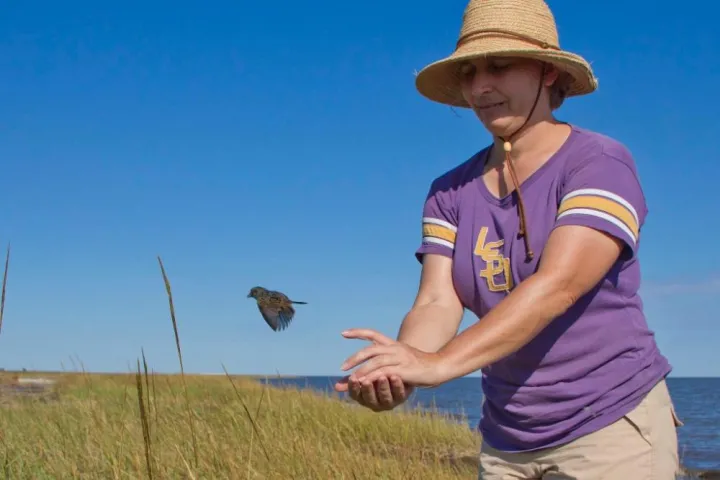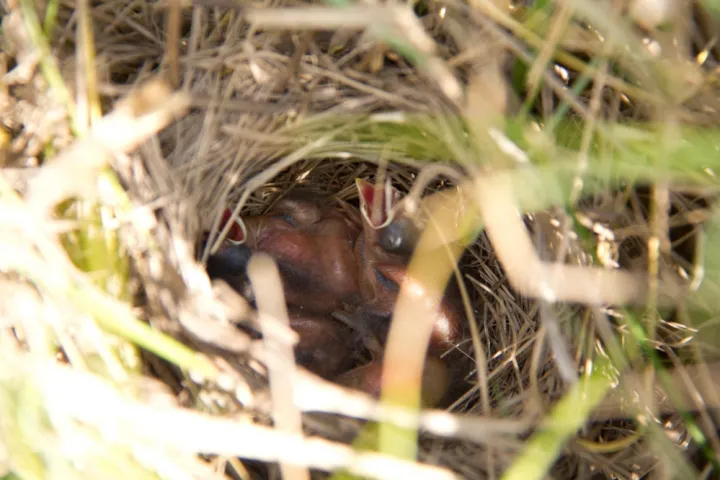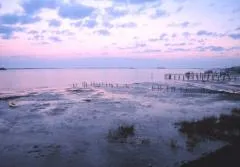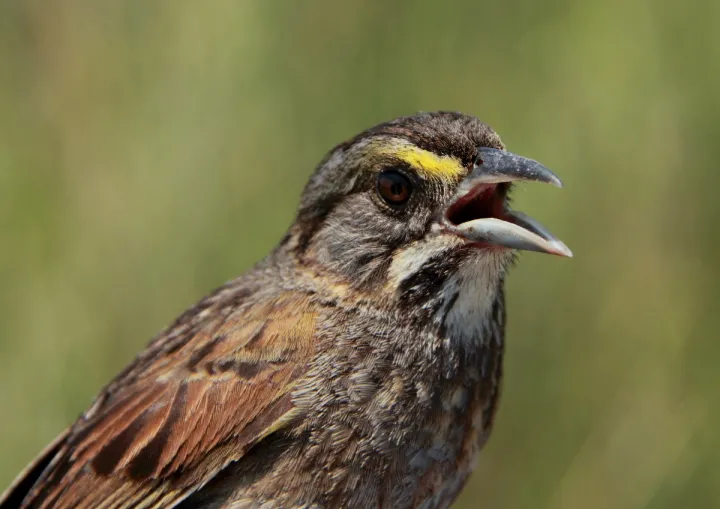Beyond the Sea: How Oil Spills in the Ocean Affect Birds On Land
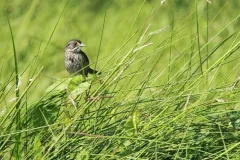
In marshlands along the coast of the Gulf of Mexico, it's easy to hear the sharp, buzzing calls of seaside sparrows (Ammodramus maritimus)—even if they can be hard to spot. These five-inch, brown birds with vibrant yellow eyestripes make themselves visible when they perch, but quickly vanish from view as they flit amongst the tall grass. Regardless, Sabrina Taylor, Phil Stouffer, Stefan Woltmann, and Christy Bergeon Burns, biologists at Louisiana State University, spend their time searching for these small birds to ask an unusual question: How do marine oil spills affect animals that live on land?
It seems counterintuitive at first. Seaside sparrows don't dive or swim on the ocean's surface, like pelicans and other seabirds. Their dependence on grass for food and shelter means they don't venture far from the marsh, and certainly not out to sea. So it's unlikely that their feathers were oiled by the 3.19 million barrels of oil that flowed from a deep-sea well during the Deepwater Horizon oil spill in 2010. Instead, the potential effects on the sparrows and other land animals may appear months or years after the spill, as they eat food and live in grass contaminated by oil. And unlike pelicans, which now dive through oil-free surface waters, the effects on sparrows might continue for decades to come.
"One of the things I'm guessing is that you might see the longest effects in the marshes," says Dr. Taylor. Most of the open ocean is now free of oil from the spill, but the oil that washed into marshes could be there for a long time. Despite efforts to stop it, more than 1,000 miles (1,700 kilometers) of shoreline along the Gulf of Mexico was oiled, and nearly half of that area was marshes in Louisiana. Up to 30 feet from the shore, almost all of the marshgrass—stems, blades and roots—was killed by oil, which coated the blades and blocked sunlight. Without grass roots for stability, the underlying soil was eroded by waves and storms, washing away into the sea. Then much of the remaining oil was buried beneath the sediment, where there are few microbes to break it down due to the lack of oxygen. There it remains buried until it is brought back to the surface by storms, like Hurricane Isaac in 2012. What is unknown is whether the oil can reenter the food web and harm wildlife when it resurfaces over the course of decades—one of the questions Dr. Taylor is trying to answer.
Today, nearly five years after the spill, the marshgrass has largely recovered in previously-oiled areas. But that doesn't necessarily mean the habitat is safe for marsh animals like birds. To understand the long-term effects of oiled marsh on sparrows, the researchers are studying how well parents are able to raise their young in those areas. Seaside sparrows lay 2-5 eggs every year in cup-shaped nests in the grass, which are very difficult to find. Nonetheless, the researchers' field team—"quite intrepid field assistants," says Dr. Taylor—wake up early to comb the marshes for these nests in the heat of the summer when the sparrows are breeding. Once they find a nest, they check to see whether the eggs have hatched and, if they have, how old the chicks are.
The project isn't yet complete, but the researchers have published some preliminary results. In 2012 and 2013, several years after the spill, sparrows that built their nests on previously oiled marsh had far less luck in raising their young. In 2013, about half of the parents who laid their nests in unoiled marshes successfully reared their nestlings to fledging, when they leave the nest—but only 5 percent of those laid in oiled marshes did the same. There are several explanations for why chicks aren't surviving in previously oiled marshgrass. One is that the toxins from oil remain in the environment and are harming the young. Nestlings could eat oil-related toxins if the insects and other critters that their parents dig up from the mud are contaminated. "Young birds are more sensitive to toxins because they're growing," says Taylor. Another possibility is that there is less or different food in the oiled marsh areas because the insect community shifted after the spill. The researchers are collaborating on projects to examine that question as well, including looking at adult sparrow diets and observing the food items being brought to the nests for the chicks.
Another question the researchers have is whether the remaining oil is affecting the adult sparrows. The main danger of the most toxic parts of oil, called PAHs for polycyclic aromatic hydrocarbons, is that they can cause cancer and liver disease, suppress the immune system and reproduction, or have developmental effects. For example, the precious energy used to process and eliminate the PAHs could leave them without enough to feed themselves or raise their young. The researchers are looking for the activation of a gene called CYP1A, which begins the process of metabolizing PAHs, in adult seaside sparrows in order to know if they are still encountering fresh oil and toxic PAHs. They are also looking at stress hormones in the birds' blood to see if detoxifying from the oil stresses them out, which could also affect their reproduction.
In the long term, the danger is that the sparrow population may shrink by regularly encountering reemerging oil over the years. Although they are small, seaside sparrows are top predators in the ecosystem, feeding there year-round and keeping their prey populations in check. "If there are no top predators to eat insects and snails, that can create an imbalance," says Dr. Taylor. "That's something that could have a long lasting effect, and could reduce biodiversity on the marsh."
The Ocean Portal receives support from the Gulf of Mexico Research Initiative (GoMRI) to develop and share stories about GoMRI and oil spill science.
The Gulf of Mexico Research Initiative (GoMRI) is a 10-year independent research program established to study the effect, and the potential associated impact, of hydrocarbon releases on the environment and public health, as well as to develop improved spill mitigation, oil detection, characterization and remediation technologies. For more information, visit http://gulfresearchinitiative.org/.


